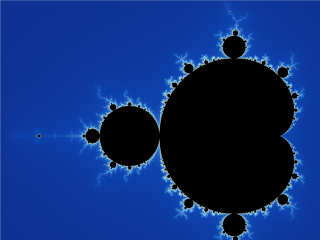Week 3
Reading Response: Strange Design Loops
From this week's reading, I'd like to respond to Artful Design Principle 3.14, which states:
Principle 3.14: Savor strange design loops.
This principle is elaborated at Page 138-143, where Ge shows various examples of design loops in paintings, symbols, sound effects, narratives/poems, and installations.
I was, and am still very into this kind of self-nested loops in every aspect of art, math, and philosophy. I once delivered a 1.5h talk dedicated to this topic in my undergrad. It clicked to my mind when I watched a very fun talk by Dylan Beattie. He mentioned this weird concept of self-nesting in programming. Quines are the programs that output its own source code.
exec(s:='print("exec(s:=%r)"%s)') # try this in python
He also mentioned some fascinating programming art pieces in loops. Life of Life is "A video of Conway's Game of Life, emulated in Conway's Game of Life". They built and/or/nor gates with Game of Life widgets, and put it together to emulate the game again! It can go on and on.
I recalled one of the most strange novels I read: The Counterfeiters (French: Les Faux-monnayeurs) by André Gide. This is probably the earliest meta novel. One of the protagonists in the book, Édouard, was writing a novel called The Counterfeiters -- exactly the same name as itself! He (or perhaps the real author, Gide) said:
Listen, in order to achieve this effect, I use a novelist as the central character of the novel; and the theme of the book, if you must have a theme, is precisely the novelist's struggle when using the reality before him as material for his novel.
Gide introduced the concept of Mise en abyme to literature. The same concept was also adopted to images and advertisements. People love these self-reflective images because they feel puzzled and amused by the playfulness they carry. However, mathematicians treat this seriously. Fractal mathematics is a branch that specifically deal with self-reflection. The most profound and well-known example could be the Mandelbrot Set, which involves only simple calculation and self-iteration but results in a infinitely complex line shape.

I pondered on this interesting concept and tried to formalize why people find it weird and anti-intuitive.
- It violates the causal law: the cause of an effect is the effect itself. How could you know the origin in this case?
- It disregards the scaling of information. The fundamental rule of science is dichotomy. People believe that figuring every part out will demystify the whole. But for self-referencing phenomenon, zooming in or out does not change the complexity or the information it contains at all.
Ge would use the word "sublime" to describe this phenomenon. Exactly, adding a little self-reference to a design can always trigger a sense of playful infinity. It then occurred to my mind that, we establish self-esteem through self- and cross-reference as well. As I interact with others, I see the image of myself in other people's eyes. I become the subject and the object of observation at the same time. I have experienced this kind of moments when my consciousness went out of my body and just watched what I was doing. These were the moments that my cognition of myself changed. Perhaps, a sublime design should be always reflective -- it should be the media that let us see the truth of ourselves, make us marveled and self-observed.